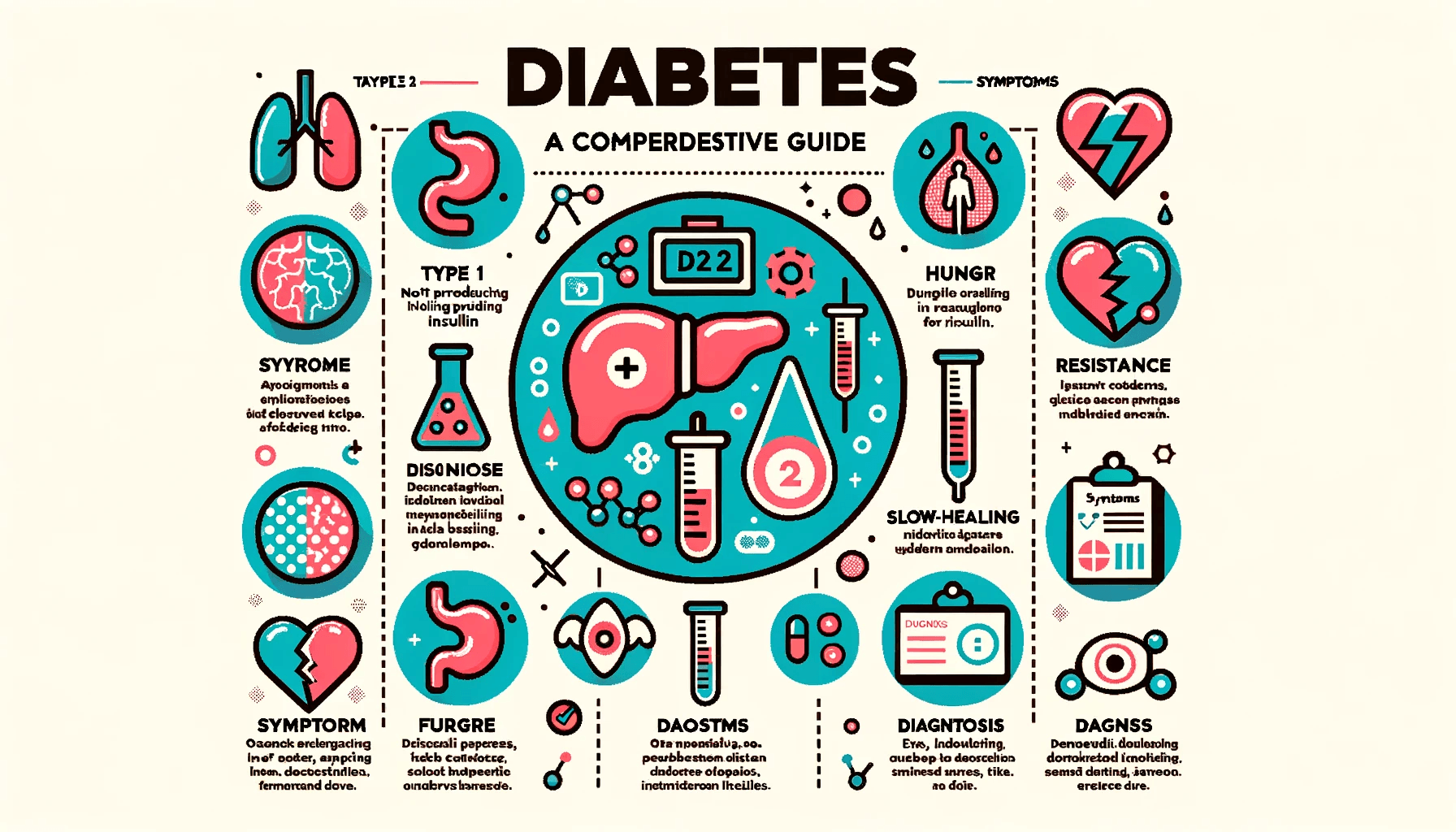
Diabetes is a condition that impacts millions of lives around the world, often leading to complications that can affect different parts of the body. One such complication is the swelling of limbs which can be both uncomfortable and concerning. If you've been wondering, "Do swollen limbs lower blood glucose?" you're not alone. This article aims to explore the relationship between diabetes, swelling, and blood glucose levels.
🔍 Seeking a breakthrough in Type 2 Diabetes management?
Discover our expert insights and innovative approaches on ‘How to Cure Diabetes’.
Click to transform your health journey today!
What you\'ll find in this article?
- Diabetes and Leg Swelling
- Causes of Swelling in Diabetic Patients
- How Does Diabetes Cause Leg Swelling?
- What Are the Symptoms of Swollen Legs Due to Diabetes?
- How to Treat Swelling from Diabetes?
- When Should You See a Doctor for Swollen Legs?
- Can Lifestyle Changes Help with Diabetic Swelling?
- What Are Effective Home Remedies for Diabetic Edema?
- Related Questions on Diabetic Swelling and Blood Glucose Levels
Diabetes and Leg Swelling
When diabetes is not well-managed, it can lead to circulatory issues and damage to blood vessels. This damage can cause fluid to leak into surrounding tissues, leading to swelling, known medically as edema. Specifically, the legs and feet of diabetic patients are prone to this condition.
For those living with diabetes, it's crucial to understand why leg swelling occurs and how it can be a sign of complications requiring immediate attention. Swollen limbs can be a sign of worsening diabetic symptoms and may not necessarily indicate a lowering of blood glucose levels.
While managing diabetes, it's also important to pay attention to other symptoms that may accompany leg swelling, such as numbness, pain, or changes in skin color, as these can be signs of serious conditions like a diabetic foot.








Explore our specialized services in diabetes care 🌟.
From personalized diet plans to effective exercise routines, we have what you need to take control of Type 2 Diabetes.
Visit our services page now!
Causes of Swelling in Diabetic Patients
There are several reasons why an individual with diabetes might experience swelling in their limbs. One common cause is poor blood circulation, which can result from high blood sugar levels damaging blood vessels over time. This can lead to fluid retention, particularly in the feet and ankles, known as peripheral edema.
Other contributing factors include kidney problems or diabetic neuropathy, which is nerve damage caused by diabetes. These complications can hinder the body's ability to manage fluids and can result in swelling.
How Does Diabetes Cause Leg Swelling?
Diabetes can cause leg swelling through several mechanisms. High blood sugar levels can damage the kidneys' filtering system, leading to a condition known as diabetic nephropathy. When the kidneys are damaged, they can't remove excess fluids from the body efficiently, leading to fluid retention and swelling.
Poor glycemic control can also damage capillaries, the small blood vessels responsible for fluid exchange between tissues and the bloodstream. This can cause fluids to leak into the surrounding tissues, resulting in swelling.
What Are the Symptoms of Swollen Legs Due to Diabetes?
The symptoms of swollen legs due to diabetes can vary and may include puffiness, stretched or shiny skin, and skin that retains a dimple after being pressed. In some cases, swelling may also be accompanied by a feeling of heaviness, stiffness, or aching in the affected limbs.
Swelling may also affect mobility and increase the risk of falls, making it important to address. Additionally, patients may notice an increase in the size of their legs or a sensation of tightness in their shoes, indicating that swelling is occurring.
How to Treat Swelling from Diabetes?
Treatment for diabetic leg swelling often involves addressing the underlying causes, such as improving blood sugar control. In some cases, medication may be prescribed to help remove excess fluid. Compression stockings can also be beneficial in reducing swelling.
Regular exercise and maintaining a balanced diet can improve circulation and reduce the risk of further swelling. Diabetic foot care solutions for swollen feet are also critical and may include proper hygiene and wearing appropriate footwear.
It's essential to monitor and manage blood sugar levels to prevent further complications. Management strategies may include medication, dietary changes, and consistent monitoring of blood glucose levels.
When Should You See a Doctor for Swollen Legs?
If you experience leg swelling that doesn't improve with home care, or if you have other symptoms like pain, chest pain, or difficulty breathing, it's crucial to seek medical attention immediately. These could be signs of a blood clot or heart failure, conditions that require prompt treatment.
Consistent swelling that doesn't subside overnight is another sign that you should visit a healthcare provider, as it can indicate a complication of diabetes or another underlying condition.
Can Lifestyle Changes Help with Diabetic Swelling?
Lifestyle changes are often recommended to help manage swelling due to diabetes. These can include:
- Elevating legs to improve circulation.
- Maintaining a healthy weight to reduce pressure on the legs.
- Engaging in regular exercise to improve blood flow.
- Reducing sodium intake to minimize fluid retention.
Making these changes can significantly impact the management of diabetes and the prevention of swelling.
What Are Effective Home Remedies for Diabetic Edema?
Several home remedies can help manage diabetic edema. These might include:
- Soaking feet in Epsom salts to reduce swelling.
- Drinking dandelion tea, which may act as a natural diuretic.
- Massaging the affected area to encourage fluid movement.
Hydration is also critical, as it can help to flush excess fluids from the body. However, it's essential to consult with a healthcare provider before trying new remedies, especially if you're on other diabetes medications.
Does Swelling Increase Blood Sugar?
Swelling itself does not directly increase blood sugar levels. However, the underlying factors causing the swelling, such as infection or inflammation, can potentially lead to higher blood glucose readings. It is important to address both swelling and blood sugar levels to maintain overall health.
Can High Blood Sugar Cause Swelling in Legs?
Yes, high blood sugar can damage blood vessels and kidneys over time, leading to poor circulation and fluid retention, which in turn can cause swelling in the legs. It's vital for individuals with diabetes to manage their blood sugar levels to prevent such complications.
Does Low Blood Sugar Cause Edema?
Low blood sugar itself is not typically associated with edema. Swelling is more commonly linked to high blood sugar levels and its complications in diabetes. However, one should monitor all aspects of their diabetes management, including blood sugar levels, to identify any potential issues early on.
How Do You Get Rid of Diabetic Edema?
To manage diabetic edema, it is important to:
- Keep blood sugar levels within the target range.
- Use compression stockings as recommended by a healthcare provider.
- Elevate legs regularly to decrease fluid buildup.
Seeking medical advice for appropriate medication and considering lifestyle changes like diet and exercise can also help alleviate symptoms of diabetic edema.
Let's also take a moment to explore further insights through a helpful resource. Watch this informative video on managing diabetic edema:
In conclusion, while swollen limbs are a common issue for people with diabetes, they are not a direct indicator of lower blood glucose levels. Instead, they signify potential complications that require careful management and treatment. It's crucial to stay vigilant and proactive in your diabetes care to ensure the best quality of life and health outcomes.
✨ Other articles you might be interested in:



